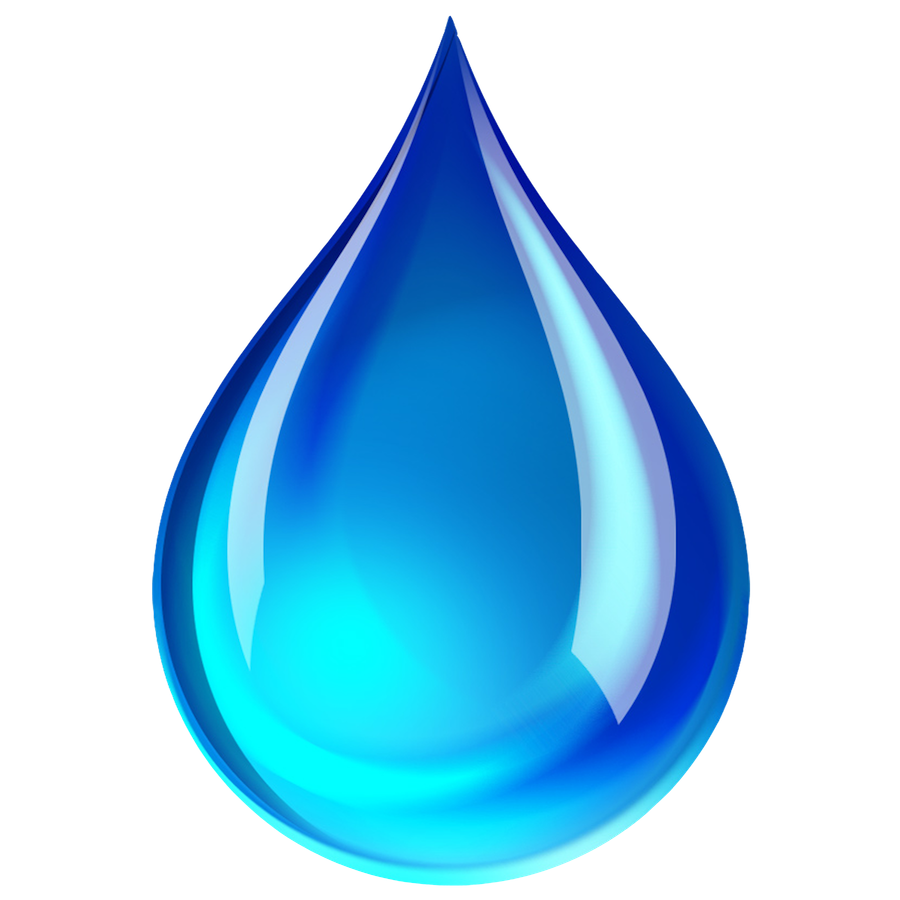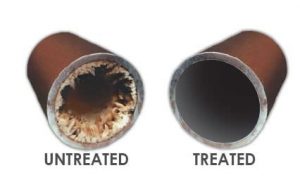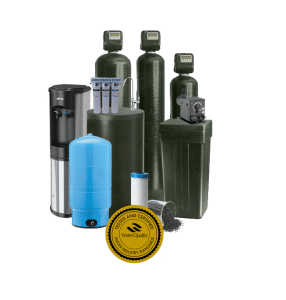DRINKING WATER FILTRATION PRODUCTS:
Your Final Barrier for Water Consumed at the Water Faucet.
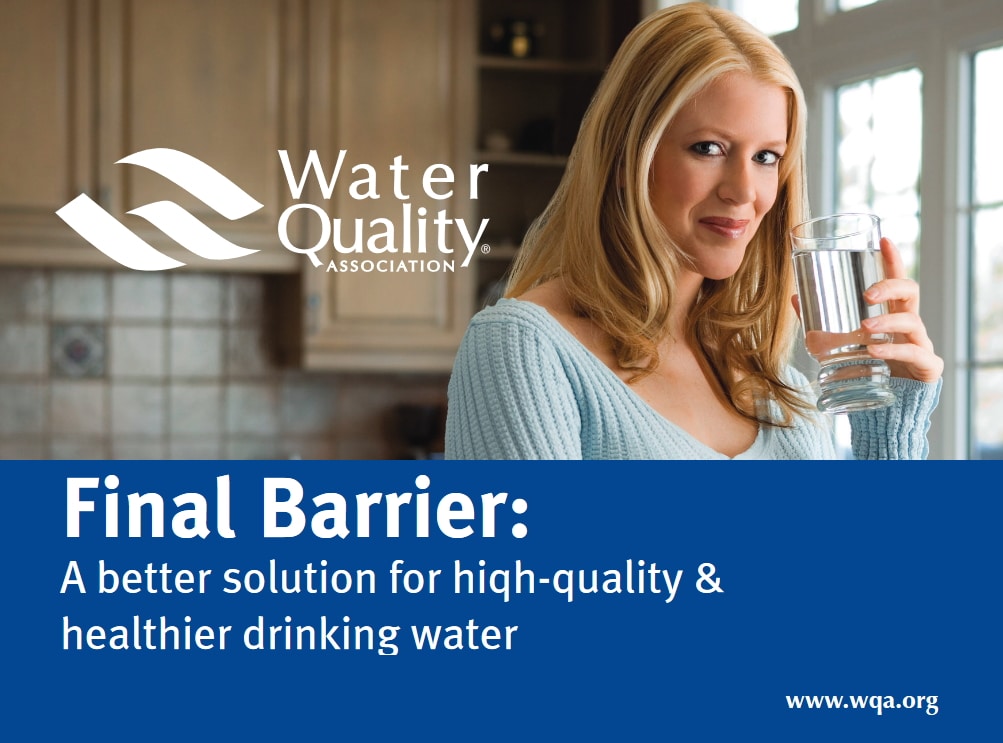
What does Final Barrier treatment mean? Final Barrier treatment is technology installed at the point where water is consumed (it is also called Point-of-Use technology or POU). It can be:
• Pour-through pitchers
• Countertop units
• Faucet-attached devices
• Under-the-sink filters
• Refrigerator filters
• Reverse osmosis technology units
How is water treated before coming into our homes and workplaces? Central water treatment plants treat water to “drinking water quality” – defined by the federal Safe Drinking Water Act.
Fact: Only about 1% of water treated by municipalities is consumed by people.
Fact: 99 out of every 100 gallons of drinking water is used to water lawns, flush toilets, fight fires, etc. We call this “working water”.
What can go wrong with our water before it reaches our home? The US has the safest drinking water in the world. But with a vast distribution system, the potential for harm is very real:
- Despite central treatment, these contaminants may still be present:
- Endocrine disruptors (hormonal)
- Pharmaceuticals
- Disinfection byproducts (DBPs)
- Pesticides and herbicides
- After central treatment potential points of contamination are:
- Biofilms (A film adhering to surfaces that are regularly in contact with water)
- Repairs and replacements
- Cross connections with waste
- Power outages and leaks (negative pressure points)
- Corrosion
- Leaching from pipe walls, etc.
How can we focus on improving the water quality of the 1% that we will consume? Final Barrier Treatment of course! The 1% can be economically treated to the highest safety levels at the point where water is consumed i.e. your faucet!
Here is what Final Barrier treatment does:
- Final Barrier treatment provides proven reduction of:
- Disinfection byproducts formed during treatment and transmission to homes & businesses.
- Corrosion products from the distribution system and home plumbing. (For example: Lead)
- Contaminant intrusions into the system.
- Disease-causing microbiological organisms.
- Trace levels of endocrine disruptors, personal care products, and pharmaceuticals.
What are the Final Barrier technologies?
Contamination Drinking Water Filtration Technologies
Inorganics (i.e. metals, etc.) Ion exchange, distillation, reverse osmosis
Microbiological Organisms Reverse osmosis, distillation, ultraviolet, carbon blocks
Particulate Matter Reverse osmosis, distillation, activated carbon
Volatile Organics Activated Carbon
How can regulators and homeowners find out which drinking water treatment technologies work? Through third-party laboratory testing & certification. Certified products are tested to NSF/ANSI (National Sanitation Foundation/American National Standards Institute) standards.
Here are some of the common standards:
42 – Filter aesthetic contaminant performance evaluation
44 – Softener contaminant performance evaluation
53 – Filter health contaminant performance evaluation
55 – Ultraviolet contaminant performance evaluation
58 – RO (Reverse Osmosis) contaminnat performance evaluation
62 – Distiller contaminanat performance evaluation
Who can certify a water treatment product?
- Water Quality Association – (WQA)
- National Sanitation Foundation – (NSF)
- Canadian Standards Association – (CSA)
- International Association of Plumbing and Mechanical Officials (IAMPO)
- Underwriters Laboratory – (UL)
Who is the Water Quality Association (WQA)? The Water Quality Association (WQA) is a not-for-profit international trade association representing the residential, commercial, and industrial water treatment industry. WQA maintains a close dialogue with other organizations representing different aspects o the water industry in order to best serve consumers, government officials, and industry members.
WQA is a resource and information source, a voice for the industry, an educator for professionals, a laboratory for product testing, and a communicator to the public. The association serves (over 2,500) company members located in the USA, Canada, and International.
WQA’s ANSI-accredited product certification offers a scientific method for consumers to ensure the effectiveness of the products they purchase. Product testing follows guidelines developed by ANSI/NSF, the most respected standards-development agency in the nation. Each technology is tested according to different standards.
Here’s how products get the WQA’s Gold Seal Product Certification: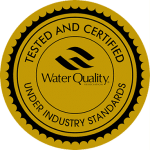
- Performance testing
- Structural integrity evaluation
- Material safety assessment
- Literature review
- Annual onsite audits
WQA has certified nearly 10,000 drinking water treatment devices and components. WQA conducts annual audits of nearly 400 facilities. Visit www.wqa.org for a list of certified products.
WQA certifies professionals too! WQA’s Professional Certification testing program gives homeowners additional confidence in the knowledge & commitment of their water treatment professional.
- To be certified, professionals go through a series of classes, specialized training, and pledge to abide by a strict code of ethics.
- They show a necessary level of knowledge of water chemistry and treatment technologies.
- They must demonstrate a commitment to stay on top of industry developments through continuing education.
- Certification is reviewed by outside experts. Guidelines recommended by the National Organization for Competency Assurance (NOCA), the nation’s certifier of certifiers.
The WQA has 1,750 Individual Certified Professionals.
Where do we go now? We’ve learned a few fundamental facts about water:
- Only about 1% of centrally treated water is consumed by people.
- Science and technology is constantly discovering more potential contaminants in the water – such as pharmaceuticals and endocrine disrupters – including, at times, in water that has been centrally treated.
- Final Barrier treatment can stop many elements that come into the home, even after water has been centrally treated.
Taking the long-range view, it seems clear that within 20 years the current paradigm – centrally treating water and doing essentially nothing more – will no longer work. Central treatment will not be able to cope with the demand for higher quality water. (It is worth noting that even in 2011, a scientific survey showed that two-thirds of Americans have concerns about the quality of their drinking water. The same survey showed 50% of Americans believe Federal drinking water laws should be more strict.)
The most practical solution is to encourage homeowners & employers to install drinking water treatment products and curbside systems (very small systems that treat drinking water for 5-10 homes) into the current paradigm. The great news is that there is no need to invent new products or technologies. The water treatment industry is doing this all the time. Instead, it is up to policymakers to invent new regulations and permissive regulatory structures to implement this new approach. The industry already has the standards development system testing laboratories, ANSI product certification programs, audit systems, and professional training.
It is simply a matter of will and cooperation to make a healthier future for everyone.
Three objections have been raised in the past to this concept:
- First, how can we monitor the current status and life span of treatment technology?
- Second, how can we implement this process across millions of homes and apartments?
- Third, how do we pay for this technology?
Solutions to all of these can be envisioned today:
- Endpoint monitoring is being done today, and new technologies are coming online every year. Low-power, low-cost technologies exist, or soon will, that can communicate, in real time, to a central monitoring station. Also, current technologies are designed with warning lights and can even shut off automatically when they reach a predetermined point.
- This Final Barrier concept would need to be implemented over a period of decades with interim solutions for the mid-and short-term. Local codes can be adjusted to create “water ports” in new construction that allow service personnel to change out a filter without entering the home. Other means for extremely simple switchouts of filters have already been designed and implemented in residential filtration products.
- Consumers have already established the price of drinking water – it’s what they are willing to pay for bottled water. The same monitoring technology mentioned in point one above can be used to determine the amount of drinking water used, and this can b separately billed to the consumer.
No one says it will be easy, but treating 100% of the water in a municipal system to “drinking water quality” and then wasting 99% of that quality through leakage, flushing toilets, watering lawns, fighting fires, is an unsustainable strategy.
